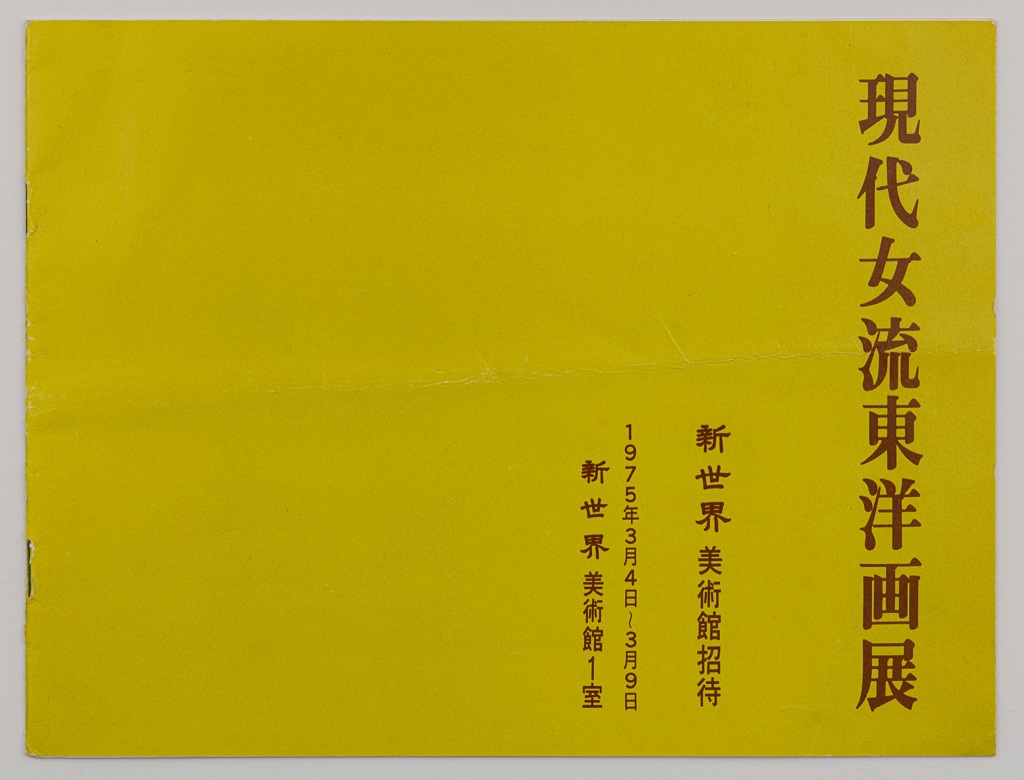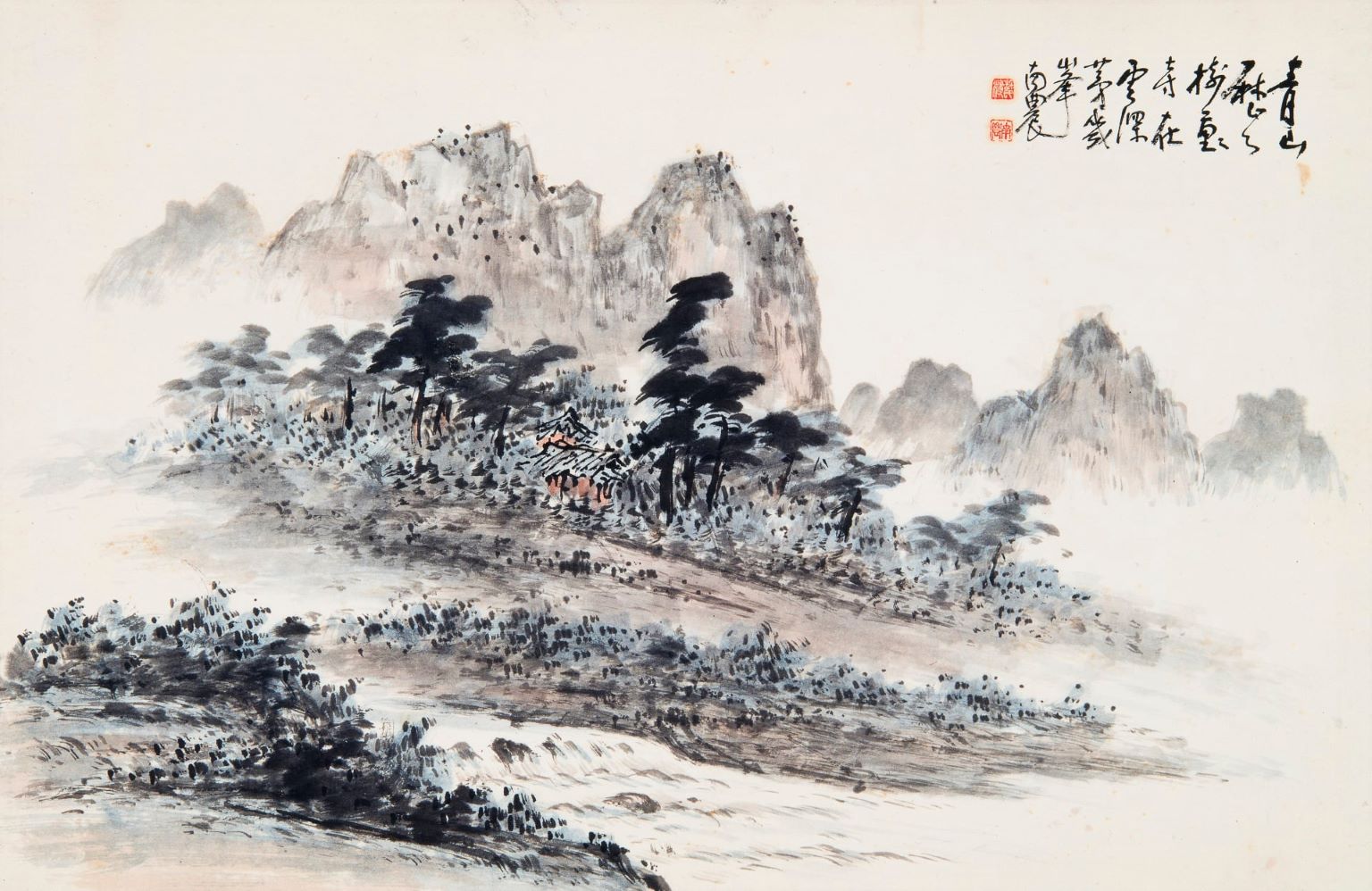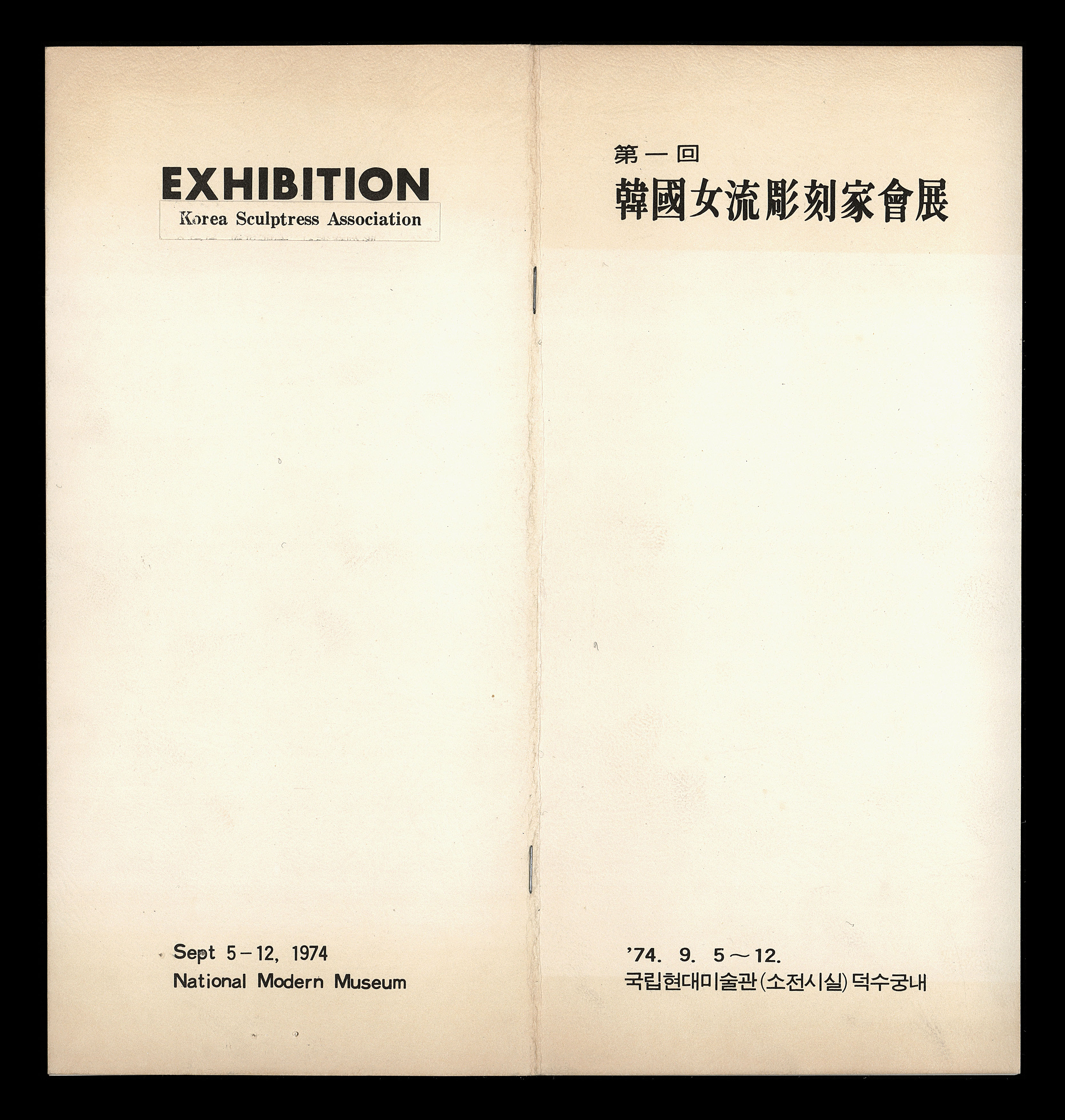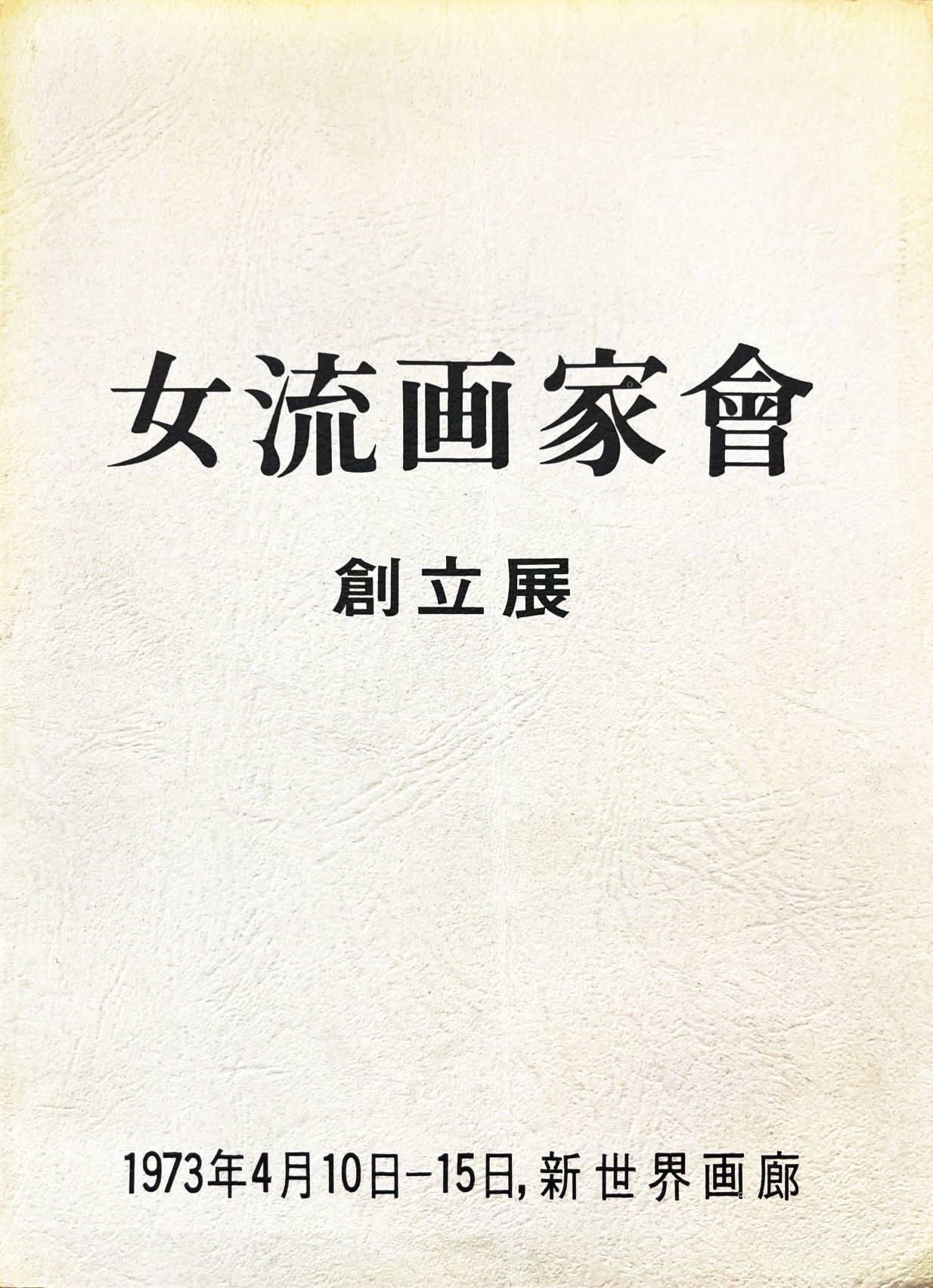
Modern Women’s Eastern Paintings Exhibition, Brochure, 1975, MMCA Art Research Center Collection
Modern Women’s Eastern Paintings Exhibition
* Source: MMCA
Related
-

Feminist art
Feminist Art refers to any art practice conducted with a feminine consciousness and gender equality awareness. Emerging in the 1970s in the West and in the 1980s in South Korea, Feminist Art is mainly themed around awareness of gender-discriminatory culture, feminine sensibility, and femininity, all of which have been explored by feminist artists. Feminist Art has become a revolutionary force in expanding the definition of art by incorporating new media and perspectives into established art. It was also applied to a variety of fields, including painting, performance, photography, installation, new media, film, and craft. Korean Feminist Art came into being in the mid-1980s by female Minjung artists, such as Kim Insoon, Kim Djin-suk, Yun Suknam, Park Youngsook, and Jung Jungyeob. From the 1990s onward, it evolved with a new generation of artists, including Lee Bul, ium, and Ahn Pilyun, who were influenced by postmodern culture, as main figures. A curator and administrator, Kim Hong-hee organized several exhibitions such as Women, the Difference and Power held in 1994, provided direction for Feminist Art through her research publications including Women and Art (Seoul: Noonbit, 2003), and discovered young artists. The most prominent Feminist artists in the 1990s were Yun Suknam, Park Youngsook, and Lee Bul. Young Feminist artists, who have been leading Feminist Art since the 2000s, include Song Sanghee, Yang Haegue, Chang Jia, and siren eun young jung. Ipgim, a feminist art collective that has been committed to social activism and artistic practices, organized seven of its own projects from 2000 through 2006.
-

Eastern painting
Eastern painting (dongyanghwa) refers to the overall body of works created using traditional East Asian materials and methods, in contrast to Western painting. In Korea, Byeon Yeongro’s essay “On Eastern Painting” published in Dong-A Ilbo on 7th, July, 1920 was the first use of the term. The term then began to be used in Japan first to distinguish Oriental style paintings from Western ones. Until the late Joseon era, both calligraphy and painting were categorized under the term seohwa, but during the Japanese occupation of Korea in 1922, the first Joseon Art Exhibition [Joseon misul jeollamhoe] divided the painting section into Western and Eastern styles. Thereafter, the term Eastern-style painting entered official use in the country. After independence, the National Art Exhibition (Gukjeon) continued to use the term “Eastern painting,” but since 1970, numerous arguments were made to replace it with "Korean painting," because the term was imposed unilaterally during the Japanese colonial era.
-

Lee Kyungsung
Lee Kyungsung (1919-2009, pen name Seoknam) was born in Incheon as the first son of Lee Hak-soon and Jin Bo-bae. He graduated from Changyeong Elementary School (1926-31) and Gyeongseong Commercial School (1934-36). In 1937, he moved to Japan and graduated from the Department of Law at Waseda University in 1941. After his return to Korea, he worked as a clerk at the Gyeongseong Court. Later, he returned to Japan to study art history at Weseda University. After independence, he was appointed as the first director of the Incheon City Museum, a director of Hongik University Museum, Walker Hill Art Center (1981-83), and the MMCA (1981-83, 1986-92). He strived to improve the structure of Korean art museums and also trained professional curators. During his appointment as a professor at Ewha Womans University (1957-60) and Hongik University (1961-81), he also served as a chair of the Korean Art Critics Association and published several important books that contributed to the foundation of a modern Korean art history. He established the Seoknam Art Culture Foundation in 1989 and the Seoknam awards for art and art theory. After his retirement, he focused on his art and held numerous solo exhibitions.
Find More
-

Korean Sculptress Association
An organization established in 1974, for the purpose of nurturing the creativity and protecting the rights of Korean women sculptors and contributing to the development of modern sculpture in Korea. The inaugural exhibition was held in 1974 at the National Museum of Modern and Contemporary Art and the 33 artists that were featured included sculpture majors from Ewha Womans University, Seoul National University, and Hongik University. The goal of the group was to overcome the passive, self-limiting attitudes of women sculptors and to expand the sphere of their activities by building solidarity among women sculptors in a male-dominated field. Key members include Kang Bogyeong, Kang Seungju, Kim Gyeongmin, Kim Munyeong, Kim Sunim, Kim Yeon, Kim Jeongmi, Shin Eunsuk, Oh Gwiwon, Lee Saena, and Choi Eunjeong. The group continues today and holds annual exhibitions, invitationals, international exhibitions, and seminars.
-

Korea Woman Fine Arts Association
The Korea Woman Fine Arts Association (Hanguk yeoryu hwagahoe, KWFAA) is an art organization founded in 1973 by women artists who majored in painting at universities. It held its inaugural exhibition at Shinsegae Gallery from April 10 to 15, 1973, and in June 2023 it held the exhibition 50 Years to Today to commemorate the fiftieth anniversary of its founding. As it became a corporation in 2011, the KWFAA was renamed the Korea Women Artists Association (KWAA). Realizing that more women graduated from art universities than men, but they were at a disadvantage in establishing themselves as artists, the KWFAA organized exhibitions that encouraged women not to settle for being housewives, thus contributing to education and society. Among its major education programs are educational seminars for groups of women, such as “Art and Women” (1973), “Korean Society, Women, and Art” (1978), “Women’s Art in Korean Society” (1980), and “Korean Art in World Art” (1985). The KWFAA also continues to hold exhibitions of the social contribution nature and engage in international exchanges through these exhibitions. The exhibitions include Charity Exhibition for Helping Atomic Bomb Victims (Midopa Gallery, 1976), Charity Exhibition for the Construction of the Working Women’s Center (Seoul YMCA, 1977), Charity Exhibition for the Buddhist Hall in the Gongju National Tuberculosis Hospital (Baegak Art Space, 1986), and the Korean Women Artists’ Charity Exhibition for Helping the Elderly without Family (Sanggye Branch of Midopa Gallery, 1994). It is significant that the KWFAA (present-day KWAA), an organization voluntarily formed by women artists who majored in Western-style painting, continues to expand the scope of women artists’ activities by holding member exhibitions, invitational exhibitions, and overseas exhibitions.






